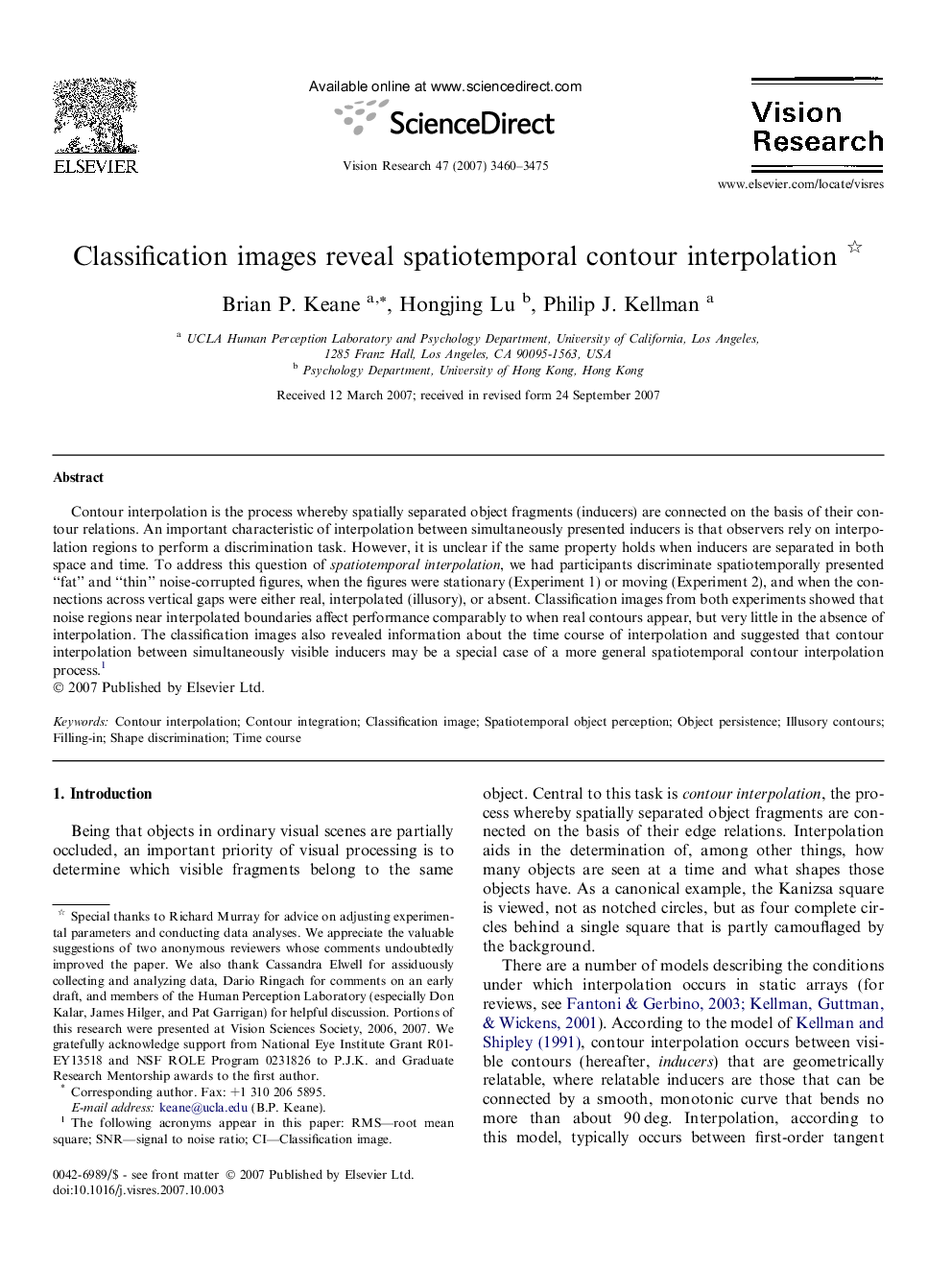| Article ID | Journal | Published Year | Pages | File Type |
|---|---|---|---|---|
| 4035282 | Vision Research | 2007 | 16 Pages |
Contour interpolation is the process whereby spatially separated object fragments (inducers) are connected on the basis of their contour relations. An important characteristic of interpolation between simultaneously presented inducers is that observers rely on interpolation regions to perform a discrimination task. However, it is unclear if the same property holds when inducers are separated in both space and time. To address this question of spatiotemporal interpolation, we had participants discriminate spatiotemporally presented “fat” and “thin” noise-corrupted figures, when the figures were stationary (Experiment 1) or moving (Experiment 2), and when the connections across vertical gaps were either real, interpolated (illusory), or absent. Classification images from both experiments showed that noise regions near interpolated boundaries affect performance comparably to when real contours appear, but very little in the absence of interpolation. The classification images also revealed information about the time course of interpolation and suggested that contour interpolation between simultaneously visible inducers may be a special case of a more general spatiotemporal contour interpolation process.1
